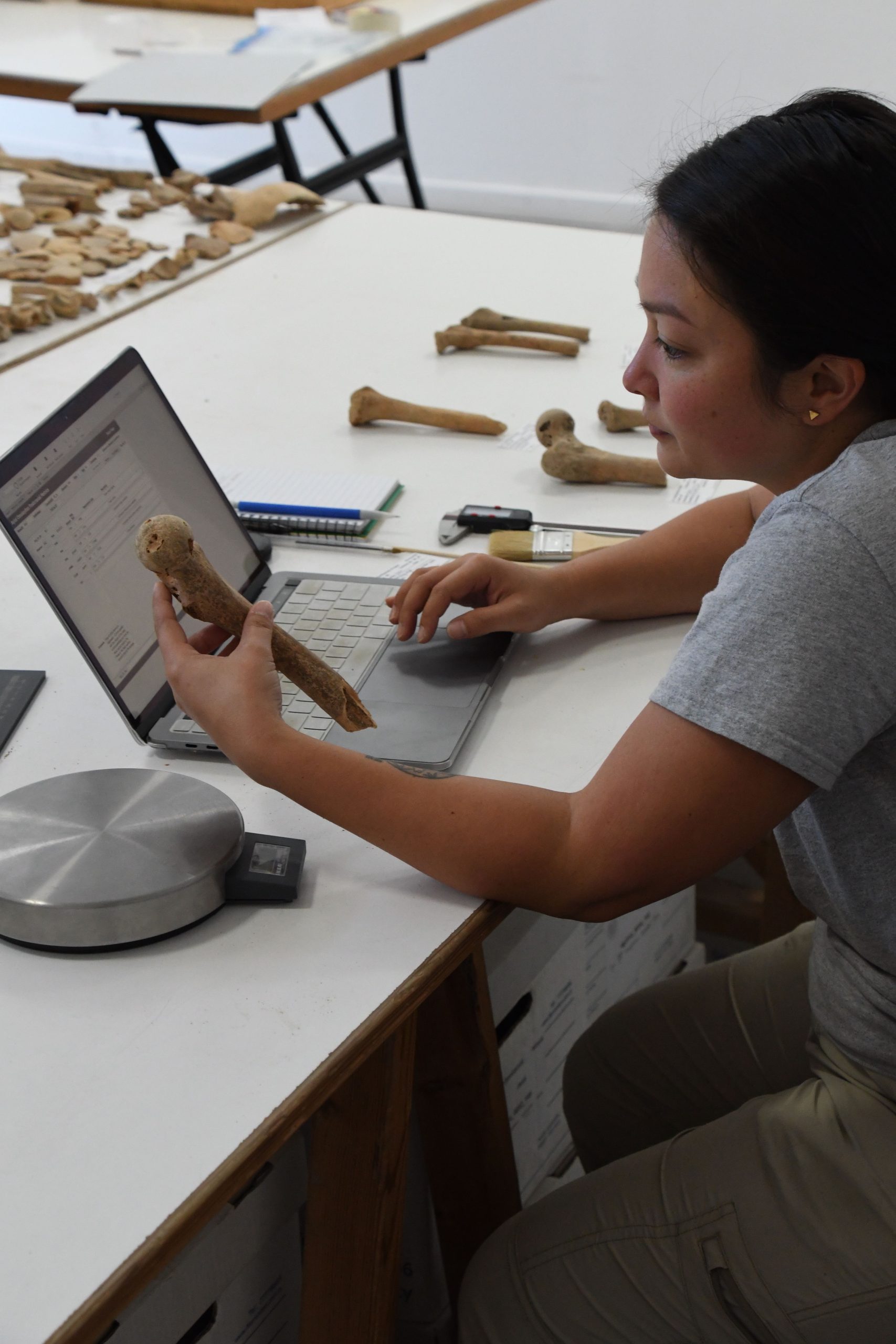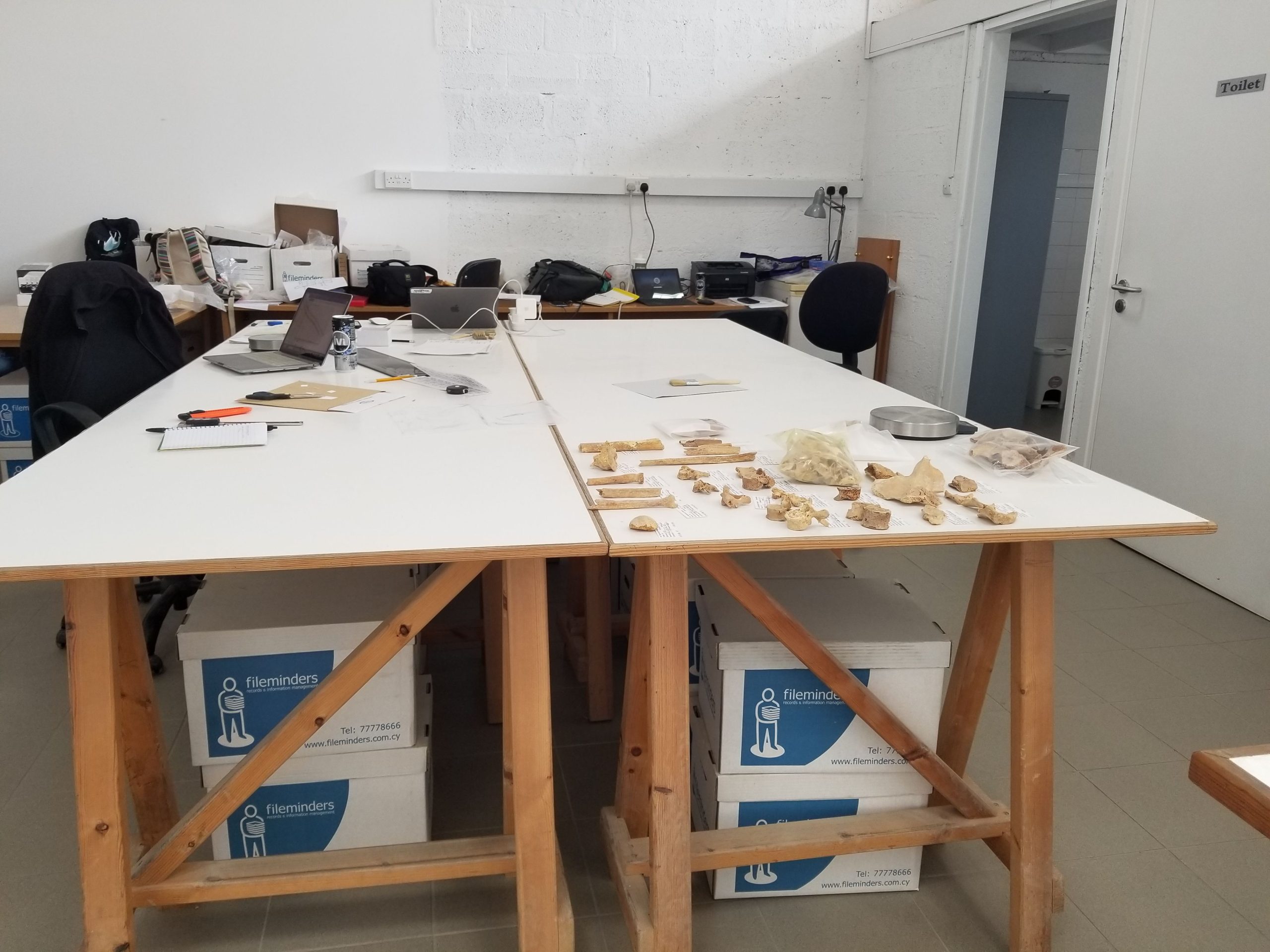
Studying the Ancient Inhabitants of the Ayioi Omoloyites Tombs
Krysten Cruz, 2022 Shirlee Meyers-G. Ernest Wright Fellowship Recipient
Scattered throughout the island of Cyprus are tombs both excavated and yet to be discovered.
In 2006, three rock-cut tombs were excavated by the Department of Antiquities in a salvage effort in the Ayioi Omoloyites neighborhood in Nicosia, Cyprus. Tombs 47 and 48 are smaller and date to the Hellenistic period, while Tomb 49 is much larger and dates to the Early Christian period and was likely used as an ossuary. This summer I worked with the Ayioi Omoloyites Bioarchaeological Project to analyze some of the skeletal material removed as part of that salvage effort. With our analyses, we are hoping to understand some aspects of the lives of these people.
While in Nicosia for this research I stayed at the Cyprus American Archaeological Research Institute. Each day we would leave to work at a lab space provided by the Department of Antiquities where over 60 boxes of skeletal material for this project were stored.

Analysis of skeletal material
I helped continue our search for answers by working through more of the commingled skeletal material from Tomb 49. Commingling occurs when the skeletons of two or more individuals are mixed, and currently in Tomb 49 there are over 250 individuals present. Due to the fact that there were no articulated individuals and all of this material is commingled and fragmentary, I would start an analysis by laying out the skeletal elements that were part of a specific context sorting them by the type of bone, what side of the body that element was from, and then which part of the bone it is. I would then conduct an inventory and basic analysis of this material by documenting various standard osteological observations, which also included taking measurements when possible as well as describing any trauma and diseases that may have manifested on the bones. Often there are indicators of stress or disease that can help us understand the health or habitual activities of these individuals when they were alive. We commonly see arthritis in the joints as well as pathologies of the vertebrae which can indicate that someone was likely participating in manual labor.
Although I participated in these general analyses, my main goal of the summer was to conduct research of my own by observing specific areas of the humerus (arm) and femur (thigh). I was looking for skeletal lesions that look like porous areas or spongy bone. There is substantial discussion in the literature about where these lesions are specifically located and what they are supposed to look like in order to be considered evidence of disease or just an indicator of a particular lifestyle, so I tried to take notes and detailed photos. I am attempting to assess whether these lesions are related to a common disease found on the island, or whether they are actually a sign that these individuals were participating in specific activities. This research would help us understand more about the populations during these two different time periods.
Even though we spent a lot of time in the lab working, we still had the opportunity to travel around the island and visit other archaeological sites and museums. It was great to see occupations across different periods in time, and I was particularly excited to go to the Archaeological Museum of the Larnaka District as it has been closed in previous years and contained material from some of the sites we had previously seen.

View of the coast from the archaeological site of Amathous
I am very grateful to ASOR and the scholarship’s donors who made these opportunities for research and learning possible. I would also like to thank Dr. Despina Pilides, Archaeologist Yiannis Violaris, and Dr. Nicholas Herrmann for allowing me the opportunity to participate in the Ayioi Omoloyites Bioarchaeological Project, as well as CAARI and the Department of Antiquities for hosting us and our studies.
Krysten Cruz is a PhD student in the Applied Anthropology doctoral program at Texas State University in San Marcos, Texas. Her research interests include forensic anthropology and eastern Mediterranean bioarchaeology.
American Society of Overseas Research
The James F. Strange Center
209 Commerce Street
Alexandria, VA 22314
E-mail: info@asor.org
© 2025 ASOR
All rights reserved.
Images licensed under a Creative Commons Attribution-NonCommercial-ShareAlike 4.0 International License

